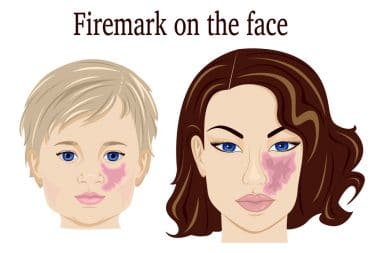Having soft, supple, and flawless skin is a desire for many. Unfortunately, many people suffer from skin problems like facial pigmentation, acne, dry and oily skin. Though it is a generalized process, the body parts exposed to the sun, like the face, legs, and arms, are more likely to get hyperpigmentation.
With decades of research, modern medical science and cosmetology experts have created solutions like La Roche-Posay Effaclar Serum, which are highly effective in treating facial pigmentation and give you spotless skin. As acne breakout is one of the significant reasons behind hyperpigmentation, using Vichy Liftactiv serum can significantly reduce extreme acne.
Understanding the root cause helps solve the problem effectively. That is why here is the ultimate guide that will help you know everything about facial pigmentation.
Causes of Facial Pigmentation
Different internal and external factors cause pigmentation of the face. Here are some of them.
Excessive Production of Melanin
Excessive production of melanin is one of the prime reasons behind facial pigmentation. It is the pigment that determines the colour of your skin. Melanocytes are cells that produce melanin. Though melanocytes produce melanin moderately, different factors can affect its natural function and cause hyperpigmentation.
Sun Exposure
Human skin produces melanin when it is exposed to sunlight. Though moderate sunlight is helpful for the topical area, overexposure to the sun can affect pigment production. Using sunscreen lotions of at least 30 SPF and reducing exposure to the sun can help to prevent pigmentation.
Melasma
Melasma causes brown, freckles-like patches on the face. These patches are caused by hormonal imbalance, especially during pregnancy. Though melasma is very common in pregnant women, it can drastically increase the pigmentation of the face and affect appearance.
Skin Inflammation
The inflammation of the skin affects melanin production. That’s why inflammation caused by acne, lupus, eczema and any skin injury can cause facial pigmentation in many people. Serums like Vichy liftactiv have abundant vitamin C and Hyaluronic Acid which effectively treats acne breakout and gives better skin texture and appearance.
Drug Reaction
Some medications like tricyclic antidepressants and antimalarial drugs can also affect the skin and cause pigmentation. The chemicals in some topical ointments can also darken the epidermis.
Some psychological disorders like stress, depression, and medical conditions like Addison’s disease can also cause hyperpigmentation.
Symptoms of Facial Pigmentation
Though the pigmentation of the face can be easily recognized by its appearance, some significant symptoms can help accurately identify it.
- Tan, brown, or black spots usually appear on facial skin and are known as solar lentigines or liver spots
- Larger patches of dark skin, usually on the face, forehead, and stomach
- Dark and thick patches on the neck and shoulders
As these symptoms are visually identifiable, it is always good to take an expert’s advice before it gets severe.
Remedies for Facial Pigmentation
Natural remedies with aloe vera, red onion, and green tea extract can help reduce hyperpigmentation; they usually take time, persistence, and patience. Here are some better and effective ways to treat and reduce facial pigmentation.
1. Skin Acids
Skins acids are known to help exfoliate the top layer. When you exfoliate, the dead skin cells are replaced by new healthy skin cells. Many effective face acids like salicylic acid can be easily found in La Roche-Posay Effaclar Serum that unclogs pores, gives you smoother, wrinkle-free skin, and keeps the ageing and fine lines at bay.
2. Lightening Creams
Many over-the-counter (OTC) lightening creams are known to be effective on pigmentation. These creams usually contain ingredients like N-acetylglucosamine, hydroquinone and liquorice extract, etc. Applying these creams can help to reduce pigmentation to a great extent.
3. Retinoids
Retinoids are derived from vitamin A and are used in many OTC skincare products. Thanks to their tiny molecular structure, they easily penetrate deep into the skin and help to treat the skin layers below the epidermis.
Retinoids usually come in different OTC formulas or with prescription medicines. Though its OTC forms are effective, sometimes the more potent prescription form of retinoids known as retinoid tretinoin (Retin-A) reduces pigmentation.
4. Chemical Peels
Chemical peels are effective in treating pigmentation. It uses strong acids on the desired skin area. By removing the part of the epidermis, it helps to reduce the hyperpigmentation of the skin. It is usually performed on the facial skin but can be used to treat different areas of the body.
Though there are multiple OTC options for chemical peels, it is best to get it done by certified professionals and dermatologists to prevent side effects and get better results.
Facial pigmentation can be caused by different conditions and internal and external factors. You can treat it with effective prevention methods, high-quality skincare products, and professional treatments.








Reply